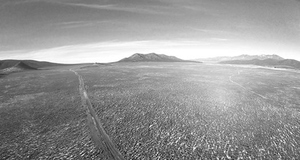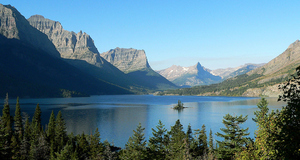Using the business practices the National Park Service and other government agencies have created, ONMS can develop programs that enable NMSP to create economic value within its boundaries and jurisdictions. While many of these programs may be currently unfeasible due to the political climate in the U.S., they may be set as long-term goals for the system to achieve down the road. Nevertheless, recommendations can be currently made for ONMS to enhance its approach towards developing joint-value creation with the private sector.
- Develop a strategic business plan for the entire National Marine Sanctuary Program
ONMS’s current efforts to work alongside the private sector through its National Business Council is a step in the right direction. To further accomplish the goals ONMS has to create a more sustainable sanctuary system, a comprehensive and strategic business plan should be developed in partnership with private stakeholders.
- Allow commercial fisheries to catch invasive species with limited regulation
By promoting invasive species as a food resource, commercial industries may be able to reduce the impact they have on marine ecosystems and biodiversity. De-regulating specific National Marine Sanctuaries can enable fisheries to reduce these populations in a sustainable way.
- Partner with Eastern National on the Passport to Your National Parks program
ONMS should develop its own passport program to encourage visitation and tourism at NMSP sites. This will allow NMSP to broaden its public awareness while collecting increased revenues for managers to better protect marine environments.
- Establish a 1:1 private-to-public matching fundraising campaign
While the National Park Service is celebrating its 100th anniversary in 2016, the National Marine Sanctuary program will be celebrating its 50th anniversary in 2022. In the same way NPS is developing the Centennial Challenge, ONMS should seek to develop its own fundraising campaign that ensures the continued financial viability for the sanctuary system. A 1:1 private-to-public matching system can ensure that U.S. Congress will not reduce its allocated resources towards NMSP if private donations were to be accepted for additional revenues.
- Develop a business plan and consulting internship
Like the NPS Business Plan Internship, ONMS should develop a pilot-program to allow graduate students to develop and implement strategic business plans for the sanctuary system. By hosting graduate students interested in business, ONMS will be able to find diversified talent outside the scientific fields.
- Develop a pilot-concessions program
ONMS should look into developing a concessions program on terrestrial land nearby its sanctuaries. This can also further increase recreation and tourism outlets in many sanctuary sites.
- Write legal mechanisms that allow NGOs to purchase underwater areas
ONMS should develop and submit to Congress a bill that allows NGOs and private organizations to purchase areas of water for the sole purpose of ecosystem remediation and protection.
- Develop a private endowment fund for corporations
Work with multinational corporations to develop an endowment to increase revenues towards NMSP. ONMS should make sure funds don’t come from corporations that actively harm the environment in any capacity.
- Establish a PES system
ONMS should create a PES marketplace for the ecosystem services its sanctuary sites have. Regarding climate change, NMSP sites will become a vital resource for carbon capture in the future.
- Collect user fees
ONMS should invest in patrol boats and aerial surveillance programs as well as create legislation that enables NOAA to collect user fees for recreational purposes. This will allow the office to generate greater revenue for the use of its resources.
By developing a variety of sustainable business programs, ONMS would be able to create value across the entire triple bottom line. Cost-benefit analyses on these programs can help support the reasoning behind NMSP’s establishment and give greater credence towards its mission to protect marine environments and biodiversity. Additionally, these programs have the potential to further NMSP’s public awareness and understanding. Overall, the net benefit of such initiatives would be positive for the entire sanctuary system.
Copeland, C. (1999, January). Ocean dumping act: a summary of the law. Congressional Research Service, Library of Congress.
Dharmaratne, G. S., Sang, F. Y., & Walling, L. J. (2000). Tourism potentials for financing protected areas.Annals of Tourism Research,27(3), 590-610.
Emerton, L., Bishop, J., & Thomas, L. (2006).Sustainable Financing of Protected Areas: A global review of challenges and options(No. 13). IUCN.
Huth, W. L., McEvoy, D. M., & Morgan, O. A. (2016).Controlling an Invasive Species through Consumption: Private and Public Values of Eating Lionfish (No. 16-05).
Living Oceans. (2014, October 16). Sustainable Financing Options for a Marine Protected Area Network in British Columbia (Rep.). Retrieved April 16, 2016, from Living Oceans website: http://www.livingoceans.org/sites/default/files/sustainable-financing-options.pdf
Minetor, R. (2008). Passport to your national parks companion guide. Guilford, CT: Falcon Guides.
Morris, J. A. (2012). Invasive lionfish: A guide to control and management. Marathon, FL: Gulf and Caribbean Fisheries Institute.
Morris, S., & Putnam, J. (2011, September). Linking NPS to the World: The Role of the National Park Service Office of International Affairs. InThe George Wright Forum(Vol. 28, No. 3, p. 259). George Wright Society.
National Oceanic and Atmospheric Administration. (2016). NOAA FY2017 Budget Summary. Washington, DC.
National Park Service, Commercial Services. (n.d.). Commercial Visitor Services: Business In The National Parks. Washington, D.C.
National Park Service. (2014). Achieving Relevance in our second century. National Council for Interpretation, Volunteers, and Education Washington, D.C.
National Park Service. (2016a). FY 2016 Centennial Challenge Projects. Retrieved April 4, 2016, from https://www.nps.gov/subjects/centennial/upload/National-Park-Service-FY-2016-Centennial-Challenge-Project-List-20160130.pdf
National Park Service. (2016b). FY 2015 Centennial Challenge Projects. Retrieved April 4, 2016, from https://www.nps.gov/subjects/centennial/upload/FY15-Centennial-Challenge-project-list_revised.pdf.
National Park Service. (2016c). NPS Announces Centennial Challenge Projects: Cost Share Partnerships Grow $15 Million Appropriation to Nearly $48 Million [Press release]. Retrieved April 4, 2016, from https://www.nps.gov/aboutus/news/release.htm?id=1776
Office of National Marine Sanctuaries. (2013). Legislation. Retrieved April 04, 2016, from http://sanctuaries.noaa.gov/about/legislation/
Office of National Marine Sanctuaries. (2016). Sanctuary System Business Advisory Council Members. Retrieved April 04, 2016, from http://sanctuaries.noaa.gov/management/pdfs/bacmembers03102016.pdf
Owen, D. (2003). The Disappointing History of the National Marine Sanctuaries Act.NYU Environmental Law Journal,11(3).
Svoronou, E., & Holden, A. (2005). Ecotourism as a tool for nature conservation: the role of WWF Greece in the Dadia-Lefkimi-Soufli Forest Reserve in Greece.Journal of Sustainable Tourism,13(5), 456-467.
Wight, P. A. (1993). Sustainable ecotourism: balancing economic, environmental and social goals within an ethical framework.Journal of Tourism studies,4(2), 54-66.
Copeland, C. (1999, January). Ocean dumping act: a summary of the law. Congressional Research Service, Library of Congress.
Dharmaratne, G. S., Sang, F. Y., & Walling, L. J. (2000). Tourism potentials for financing protected areas.Annals of Tourism Research,27(3), 590-610.
Emerton, L., Bishop, J., & Thomas, L. (2006).Sustainable Financing of Protected Areas: A global review of challenges and options(No. 13). IUCN.
Huth, W. L., McEvoy, D. M., & Morgan, O. A. (2016).Controlling an Invasive Species through Consumption: Private and Public Values of Eating Lionfish (No. 16-05).
Living Oceans. (2014, October 16). Sustainable Financing Options for a Marine Protected Area Network in British Columbia (Rep.). Retrieved April 16, 2016, from Living Oceans website: http://www.livingoceans.org/sites/default/files/sustainable-financing-options.pdf
Minetor, R. (2008). Passport to your national parks companion guide. Guilford, CT: Falcon Guides.
Morris, J. A. (2012). Invasive lionfish: A guide to control and management. Marathon, FL: Gulf and Caribbean Fisheries Institute.
Morris, S., & Putnam, J. (2011, September). Linking NPS to the World: The Role of the National Park Service Office of International Affairs. InThe George Wright Forum(Vol. 28, No. 3, p. 259). George Wright Society.
National Oceanic and Atmospheric Administration. (2016). NOAA FY2017 Budget Summary. Washington, DC.
National Park Service, Commercial Services. (n.d.). Commercial Visitor Services: Business In The National Parks. Washington, D.C.
National Park Service. (2014). Achieving Relevance in our second century. National Council for Interpretation, Volunteers, and Education Washington, D.C.
National Park Service. (2016a). FY 2016 Centennial Challenge Projects. Retrieved April 4, 2016, from https://www.nps.gov/subjects/centennial/upload/National-Park-Service-FY-2016-Centennial-Challenge-Project-List-20160130.pdf
National Park Service. (2016b). FY 2015 Centennial Challenge Projects. Retrieved April 4, 2016, from https://www.nps.gov/subjects/centennial/upload/FY15-Centennial-Challenge-project-list_revised.pdf.
National Park Service. (2016c). NPS Announces Centennial Challenge Projects: Cost Share Partnerships Grow $15 Million Appropriation to Nearly $48 Million [Press release]. Retrieved April 4, 2016, from https://www.nps.gov/aboutus/news/release.htm?id=1776
Office of National Marine Sanctuaries. (2013). Legislation. Retrieved April 04, 2016, from http://sanctuaries.noaa.gov/about/legislation/
Office of National Marine Sanctuaries. (2016). Sanctuary System Business Advisory Council Members. Retrieved April 04, 2016, from http://sanctuaries.noaa.gov/management/pdfs/bacmembers03102016.pdf
Owen, D. (2003). The Disappointing History of the National Marine Sanctuaries Act.NYU Environmental Law Journal,11(3).
Svoronou, E., & Holden, A. (2005). Ecotourism as a tool for nature conservation: the role of WWF Greece in the Dadia-Lefkimi-Soufli Forest Reserve in Greece.Journal of Sustainable Tourism,13(5), 456-467.
Wight, P. A. (1993). Sustainable ecotourism: balancing economic, environmental and social goals within an ethical framework.Journal of Tourism studies,4(2), 54-66.

















